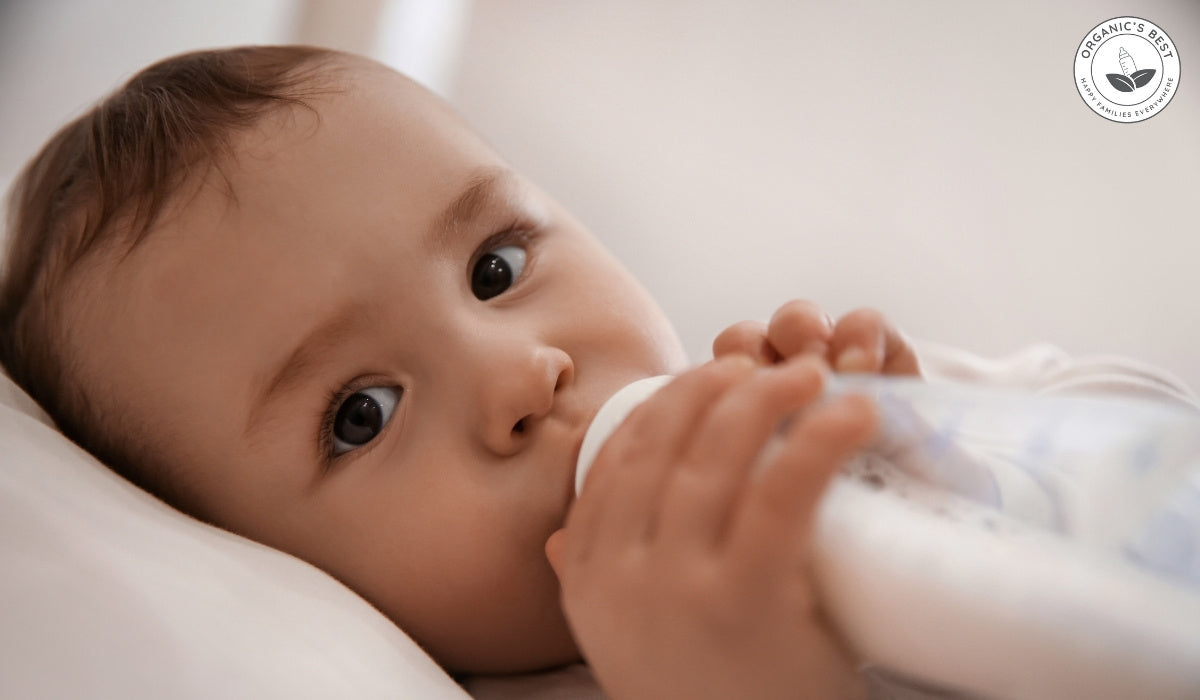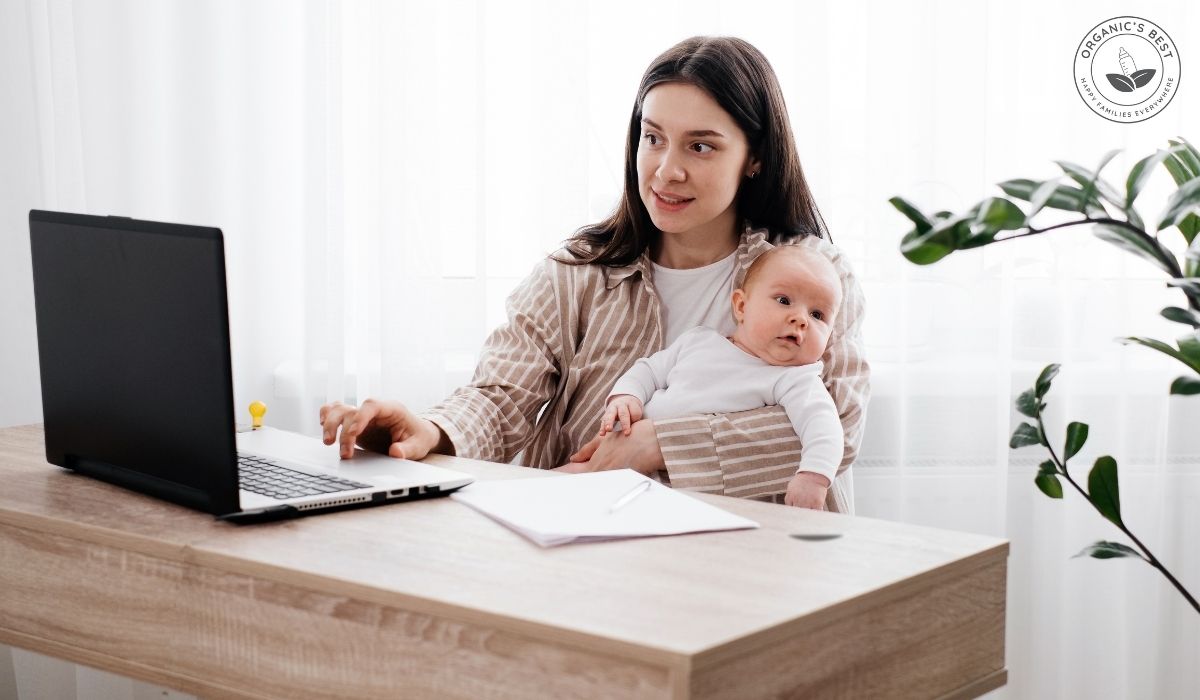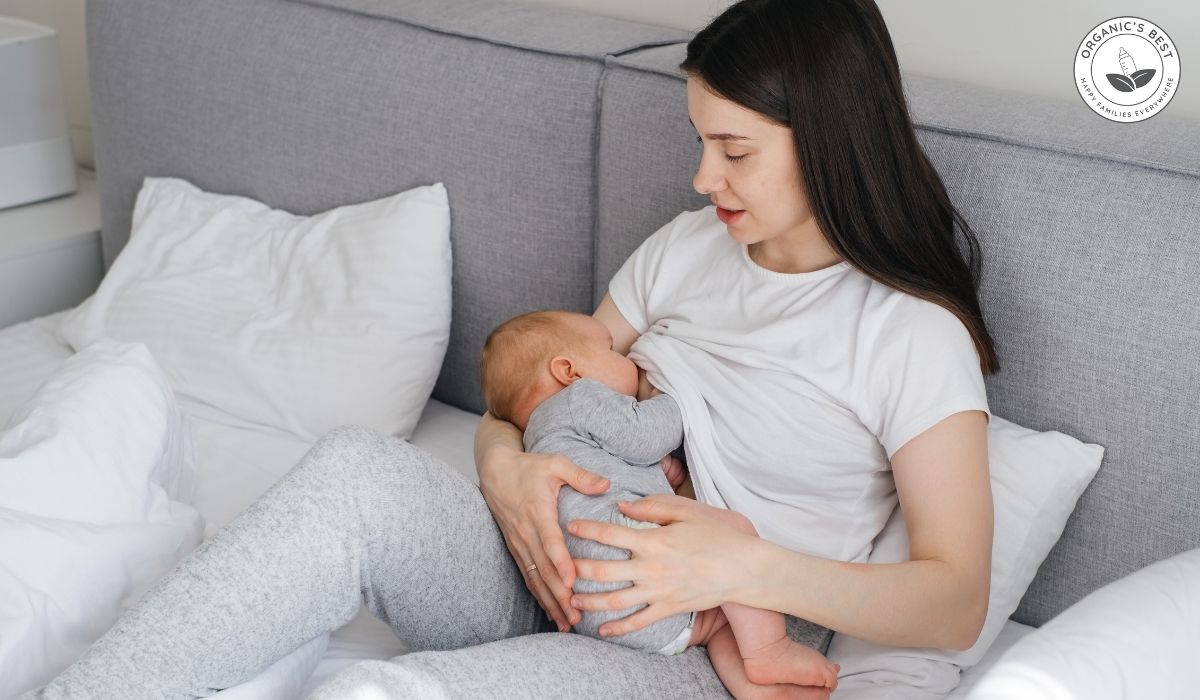Click to Get 2 FREE Boxes/Cans
Only New Customers! Click HERE to Get 2 Extra Boxes/Cans for Free With Your First Order.
BABY FORMULA
Offering new parents top-quality European infant formula from renowned brands like HiPP, Holle, Kendamil, and more. If you’re uncertain about which product to choose, our Formula Finder can help you make the best decision for your baby.
Baby Food
Offering new parents a premium selection of European baby foods, including jars, pouches, cereals, and snacks from esteemed brands like HiPP and Holle.
How to Prevent Bubbles in Formula After Shaking
by Agustina Fernandez July 01, 2024 6 min read

Picture this: You've prepared your little one's formula perfectly, following the package instructions provided by the manufacturer to a T, but something just doesn't look right. Noticing air bubbles when mixing formula may raise alarm bells, especially if your tiny tot is already prone to digestive discomforts like gas, reflux, bloating and colic.
Thankfully, there are ways to reduce the amount of air bubbles in formula after shaking. Following these tips can save you the stress of combating those pesky tummy troubles, resulting in happy and healthy feedings for you and your little one!
Table of Contents
- Is it Normal for Baby Formula to be Bubbly?
- What Happens if You Shake Formula?
- Does Shaking the Bottle Make Baby Gassy?
- How to Get Rid of Bubbles in Formula After Shaking?
- How to Prevent Air Bubbles in Formula?
- Can You Stir Formula Instead of Shaking it?
- What is the Proper Way to Mix Formula Without Bubbles?
- How to Mix Formula so it's Not Foamy?
- Conclusion on Air Bubbles and Formula Mixing
Is it Normal for Baby Formula to be Bubbly?
While preparing your baby's formula, it is perfectly normal to notice foam or bubbles forming as you begin shaking the bottle. This type of vigorous movement causes air to get trapped in the mix. While this doesn't change the nutritional composition of the infant formula, it may result in your little one experiencing heightened discomfort as they swallow this trapped air during their feed.

The formula type may impact the amount of bubbles and foam created, as the formula recipe and preparation methods vary.
The proteins, as well as any thickeners or emulsifiers, are likely to cause bubbles and foam in your formula, so choosing a formula without added thickeners may reduce the amount of foam and bubbles.
Additionally, a powdered formula may be more prone to bubbling and foaming than a ready-to-feed formula due to the extra steps required during formula mixing and the more excessive mixing needed to fully dissolve the powder.
So, is it normal for baby formula to be bubbly? Yes, many parents notice bubbles and foam after shaking the formula, but thankfully, there are steps you can take to minimize this unwanted effect.
What Happens if You Shake Formula?
If you are trying to avoid a build-up of extra air bubbles in your baby bottle, shaking may not be the way to go. Vigorously shaking your baby's bottle can introduce tiny pockets of air, creating bubbles and foam. These extra air bubbles are then swallowed by your baby during feeding, which can lead to a build-up of gas and, ultimately, an upset tummy.
While digestive discomforts can signal that there may be a bigger issue at play, like allergic reactions or food intolerances, necessitating the need to change formulas, bubbly or foamy formula may also be the culprit. In all cases, concerns surrounding your little one's diet should be promptly addressed with a trusted healthcare practitioner.
Does Shaking the Bottle Make Baby Gassy?
Many parents choose to shake their baby bottles to ensure the contents are thoroughly mixed. However, many parents are unaware that shaking formula can introduce air bubbles that may cause gas in babies. Instead, you can opt for alternative mixing methods, such as swirling formula, which helps prevent air bubbles.
However, since swirling formula is a gentler method of mixing, it may require some extra time to ensure that the powder is fully dissolved and that there are no clumps present. Moreover, some brands have specific mixing instructions that should be followed according to their guidelines. It's important to carefully read and adhere to the instructions provided by the formula manufacturer to ensure proper preparation.
If you're interested in learning more about the swirling technique, we've prepared a 13-second TikTok that explains exactly how to do it. Just click the image below to watch!
How to Get Rid of Bubbles in Formula After Shaking?
Even if you've followed the proper instructions for preparing formula, every formula chef is likely to encounter a few bubbles here and there. If you're dealing with foamy formula or excessive bubbles after shaking, patience is key! Simply letting the formula sit for a few minutes can help remove air and let the contents settle.
While you don't want to leave formula out at room temperature for more than 2 hours, giving it a few minutes to rest before feeding is a perfectly safe and well-tested method of removing air.
How to Prevent Air Bubbles in Formula?
We know that you have enough to juggle as a parent, so here are some simple tips and tricks to keep those pesky bubbles at bay without adding too many steps to your formula-making routine.

-
Warm Your Bottle: Preparing formula with cold water can make it harder to mix, resulting in more swirling and shaking, so if you're tired of air bubbles, opt for warm water. Make sure the water is warm, not hot, to preserve the nutrients in the formula and to protect your baby from burns. To warm the water, boil your preferred safe water source, whether it's tap water or bottled water, and let it cool down. Test the water on the back of your hand before using it.
-
Slow and Gentle Mixing: Avoid shaking the bottle vigorously. Instead, gently swirl or stir the formula with a sterilized fork or spoon to mix it. This can significantly reduce the formation of bubbles.
-
Avoid Overfilling the Bottle: Remember to fill the bottle to the recommended level and avoid adding too much powder. Overfilling can create more pressure when you shake the bottle, which can increase bubble formation. It is also important to properly measure both the formula and water to ensure that your little one is getting sufficient nutrients.
-
Check the Nipple: Ensure the nipple hole is the correct size for your baby's age and feeding style. A nipple with a hole that is too small can cause the baby to suck harder, which can introduce more air, leading to an upset tummy post-mealtime. Additionally, a nipple with a slower flow rate can cause the formula to come out too fast, resulting in an increased air intake.
-
Formula Dispenser: Some parents find that investing in a formula dispenser helps take the guessing game out of formula making, as this machine can effortlessly prepare a warm bottle for you in a matter of minutes. Many users also claim that these machines help maintain a consistent formula texture.
Can You Stir Formula Instead of Shaking it?
Anecdotal evidence from seasoned parents suggests that stirring formula with a spoon instead of shaking or swirling it helps prevent air bubbles. When formula is mixed, just make sure that you are using a clean, sterilized spoon, and you're good to go!
What is the Proper Way to Mix Formula Without Bubbles?
It can be quite difficult to completely avoid producing bubbles in formula, but you can take steps to limit the amount of bubbles formed when mixing formula. First things first, you'll want to choose a formula that suits your needs.
Liquid and ready-to-feed formulas may produce fewer bubbles as they require less mixing, but if you are opting for a powdered formula, make sure to mix it slowly and gently using a swirling or stirring motion instead of shaking it. It is also important to follow the package instructions to ensure that formulas are prepared safely and effectively per the manufacturer's guidelines.
How to Mix Formula so it's Not Foamy?
If you are new to the world of infant formula, you may be wondering why does formula get foamy? You're not alone in this, as many parents face the same struggle.
As mentioned above, following these two methods can help avoid foaming during the formula mixing process:

-
Swirling Formula Method: Gently swirl the bottle in a circular motion until the powder is fully dissolved. Avoid shaking the bottle vigorously, as this can introduce air and create foam.
-
Stirring Formula Method: Use a clean spoon or fork to stir the formula in the bottle gently.
Conclusion on Air Bubbles and Formula Mixing
Bubbles in formula after shaking can be a common concern for parents, especially when dealing with a tiny tot that is prone to digestive discomforts like gas, reflux, and colic. Understanding that bubbles and foam are normal occurrences can help alleviate some worry, but it's also reassuring to know that there are effective ways to minimize them.
Parents can significantly reduce the amount of air introduced into the bottle by following proper mixing techniques, such as using warm water, gently swirling or stirring the formula, and allowing the mixture to settle.
Disclaimer:
Please be aware that this information is based on general trends in babies, and it is not medical advice. Your doctor should be your first source of information and advice when considering any changes to your child’s formula and when choosing your child’s formula. Always consult your pediatrician before making any decisions about your child’s diet or if you notice any changes in your child. Breastfeeding is the best nutrition for your baby because breast milk provides your child with all the essential nutrients they need for growth and development. Please consult your pediatrician if your child requires supplemental feeding. |
Agustina Fernandez
Dr. Agustina Fernandez earned her medical degree from the prestigious Universidad Nacional de Córdoba, Argentina. With a deep-rooted passion for pediatrics, Dr. Fernandez is currently on the path to specializing in children's healthcare. Recently, she has delved into the vital field of infant nutrition. Her research interests include breastfeeding, infant formula, and baby food in little ones’ formative years. Dr. Fernandez's commitment to this area of study underscores her dedication to ensuring the health and well-being of children from their earliest days.
Leave a comment
Comments will be approved before showing up.
Also in Organic Infant Nutrition and Health Blog

10 Winter Activities for Kids and Toddlers
by Agustina Fernandez January 06, 2026 8 min read
Read More
How to Choose The Best Infant Formula: A Guide to EU Organic Formulas
by Agustina Fernandez January 05, 2026 14 min read
Read More
Best Formula for Breastfed Babies 2026 Guide
by Agustina Fernandez January 05, 2026 15 min read
Read More
Reviewed by Dr. Po-Chang Hsu, MD, MS
-

Dr. Po-Chang Hsu: Medical Reviewer of Organic's Best Blog
Dr. Hsu received his medical degree from Tufts University in Boston, Massachusetts, and holds a Master’s of Science degree from both Harvard University and Tufts University.

